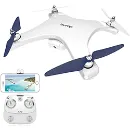
- Access with IOS and Android device
- Ensure clear 2.7K HD videos with 12MP aerial photoshoot
- In-built advanced AI technology
- One-hand controllers of drones for better usage
- Capable of capturing multiple genre scenes

- Features automatic editing templates and filters
- Powerful Wide-angle lenses with a 25mm focal length

- Stream HD videos directly from GoPro to android/ios devices
- Compatible with GoPro Hero 3+ and Hero 4

- Supports 12 MP aerial photos and 2.7K quad HD videos
- Two-way charging hub with upto 30 mins flying time
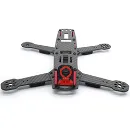
- Built-in 2-4S lipo battery with brushless motor
- Fibre frame kit drone at affordable price

- Equipped with GPS and GLONASS system
- Dual ultrasonic sensor with vision technology

- Real-time 720P HD live video stream from a smartphone
- Built-in remote for ultimate control

- Compatible with VR headset for immersive 3D experience
- Built-in G sensor for adjusting vertical, horizontal positions

- Tap fly design and gesture control features
- 4K Ultra HD camera and 1080P video with stunning quality
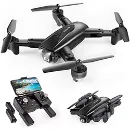
- GPS satellite navigation and one key takeoff/landing function
- Built in 2 modular batteries and flying time up to 30 minutes

- Fly by trajectory and gravity mode sensor
- VR eyeglasses for a 3D visual experience

- Hybrid 4k lightweight quadcopter drone
- Best for indoor and outdoor shootings
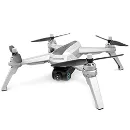
- Remote control system for one key landing and takeoff
- Smooth running and low noise operating with brushless motor

- Support Gravity sensor technology
- Includes trimming function to adjust tilt direction
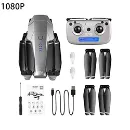
- 4K HD dual camera for aerophotography
- 5G Wifi image transmission for capture beautiful scenery images

- Automatic hovering technology at low fares
- Flexible and pre-assemble designed drone
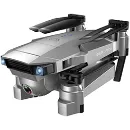
- Includes joystick mode and trajectory flying mode
- FPV image transmission with gesture technology

- 550mAh lithium-ion removable batteries
- Captures acrobatic flips and stunts

- 4mm thickness of carbon fibre quadcopter drone
- X symmetric designed simply structured quadcopter drone

- 2K FHD camera with shock absorbers to avoid camera vibration
- 2.4Hz transmitter controller with 3000 feet high range
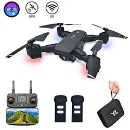
- Dual GPS positioning system with automatic launch signal
- 5G HD wi-fi real-time transmission of videos

- 720P HD camera for effective picture quality
- Wide range of digital radio allows to flight upto 300 ft
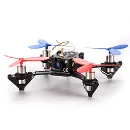
- Propellers blades to carry a heavy load
- Quadcopter drone kit with VR headset for a clear view
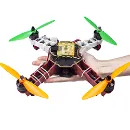
- CC3D flight controller with battery indicator
- Flexible and efficient X-shaped quadcopter

- Twist and turns from 90° to 270° with a single tap
- Ultra-compact mini drone with 3 axis gyroscopes

- 6M GPS tracker with 25cm cable compass
- Gimbal mount FPV damping PTZ camera
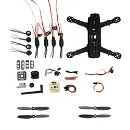
- Brushed flight board for indoor racing
- 5.8G 600mw image transmission technology

- 4k UHD Camera to shoot aerial photography
- Ultra HD picture quality deep contrast and vivid colours

- Carbon fibre and aluminium alloy lightweight drone
- Reliable and high-performance 2300kv power system

- 1080P 180° wide-angle HD wi-fi camera
- Powerful automatic air pressure altitude hold function

- WIFI FPV transmission to viewing photos on phone
- Build-in HD camera for capturing a stunning picture
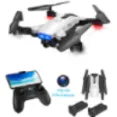
- Compatible with Android and IOS devices
- Intelligent recognition captures to follow me modes

- High spinning speed upgraded propellers
- Altitude hold function for capturing water scenes

- Nanotechnology colorful LED lightning system
- Crash-resistant design wings to avoid obstacles

- Ultrasonic altitude hold and positioning system
- 1350KV brushless motors with remote control LED screen
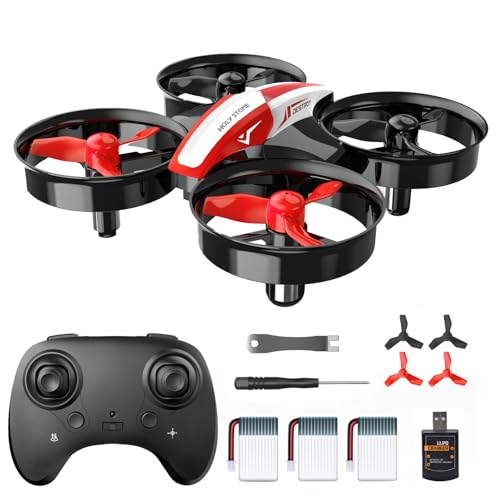
- Low battery power alarm technology
- Enables auto hovering function to hold altitude
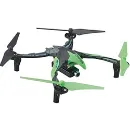
- Multi Color lights for high intensity
- Get quadcopter drone at affordable price
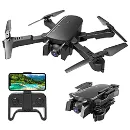
- 1080P and 480P dual cameras for extreme picture quality
- Gesture control for recording and shooting
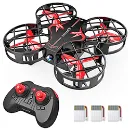
- High responsive 3D and 360° flip function
- Ultra-bright integrated LED lights for night flying
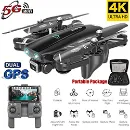
- Dual GPS with Auto return home feature
- Flying quieter with brushless motor and improve stability
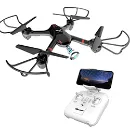
- Get LED navigation light for night events
- Best for landscape viewing real-time videos
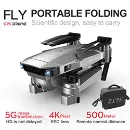
- Operate with remote control system up to 500 meters
- Durable battery and maximum flight time up to 18 minutes

- Experience up-to 20 minutes long-lasting flight time
- Integrated 6-axis gyroscope to automatically detect air pressure
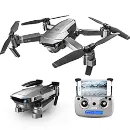
- Operate with Remote control and distance upto 500 meters
- High definition dual camera and 5G FPV Wifi image transmission
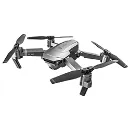
- Gesture control system to takes photos and videos
- Includes Follow me mode and trajectory flying mode
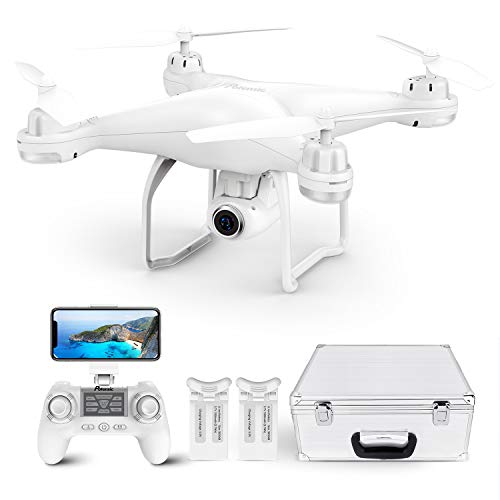
- Supports VR headset for the virtual experience
- Wind resistant drone for capturing hill stations

- Built in GPS with automatically return to home function
- Lightweight and compact design with foldable propellers

- High-quality 720P HD camera for capturing memories
- 100 metres of long-distance remote control option

- 6 axis gyro flying control technology
- 3D split-screen display for live video footage

- Easy to shoot image and video from any angle
- Support 3D VR Headset for immersive video

- WI-FI real-time transmission FPV system
- 4k HD camera for capturing quality images and photos

- 1000kv outrunner motor with F450 quadcopter frame kit
- Matched propellers, motor and ESC system

- 2.3 firmware kkmulticopter flight controller
- Impact-resistant skid-proof tube ball
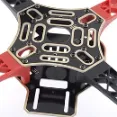
- Unlock tons of autopilot with iNav software
- Motor and propeller for battery configuration
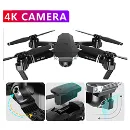
- Get high performance rechargeable battery with drone
- Optical flow dual positioning for underwater photography
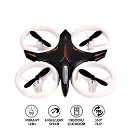
- Wireless connectivity technology
- HD camera for capture 3D flip and aerial photos
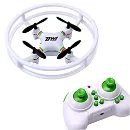
- 3D flip and 2- level adjustable speed function
- Built in colorful LED light and capture air stunt show

- 4005 FPV high-resolution camera for capture aerial images
- Quadcopter drone access with virtual reality headset
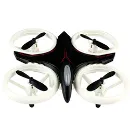
- One key take-off and landing function
- Ultra-bright Nano LED lighting propeller drones

- 720p HD camera for capturing crystal clear photos
- Low noise and Smooth flying with Remote control system

- Easy to operate with high and speed mode
- Remote control quadcopter for takeoff or back to position

- Nanotechnology colourful LED lighting system
- Crash resistant design wings to protect from obstacles

- Gesture control system to takes photos and videos
- Dual camera 1080p front camera and 720p bottom camera
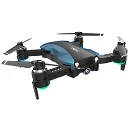
- Travel friendly design for outdoor use
- GPS Auto return home and low power return features
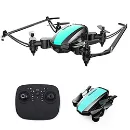
- Lightweight and Palm-size design drone
- High and low-speed control system

- Includes USB charge cable and remote control
- Headless mode enable for fast and save flying

- 6-axis gyro control system for a better experience
- Dual assense control with mobile and remote control
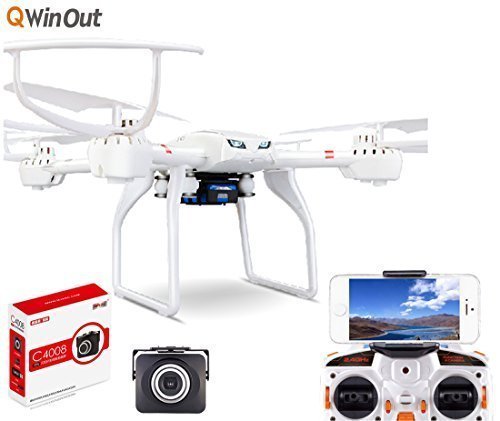
- One key return and 6 axis gyroscope sensor
- 2.4 GHz wireless remote control system
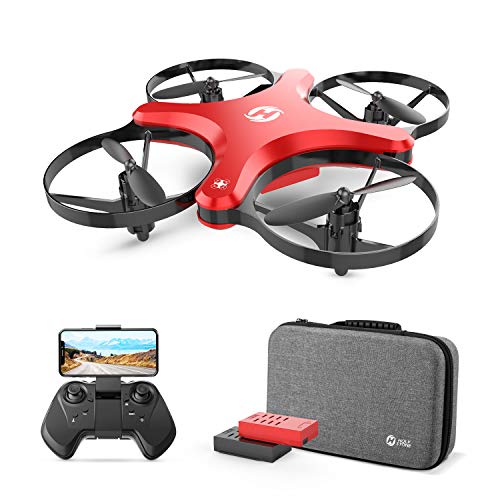
- Support 2 interchangeable batteries for longer flying time
- Foldable design with 360° protection guards
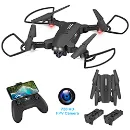
- Compact and Foldable designed drones
- 3D Flip and Rolls for to perform incredible flying
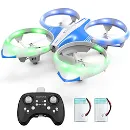
- One key-takeoff and landing option
- 3.6-axis gyros stabilizing system
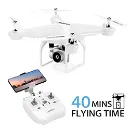
- Built-in wi-fi module for real-time transmission
- Altitude hold mode with anti-shake feature

- Long-lasting flight time upto 21 minutes
- Auto -hovering function and performs 3D flips
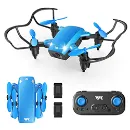
- 3 speed level option for controlling drone speed
- Built in modular2 batteries to fly upto 14 minutes

- 12000kv brushless motor for high performance
- 100° to 120° AIO camera with four lens

- 1.66mm camera for clear and better video quality
- Micro F4 flight controller with 1048 brushless motor
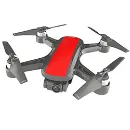
- Orbit mode and follow me mode
- Suitable GPS Drones for commercial use

- LED infrared sensor hover technology
- Automatic avoidance function and Multi-Takeoff modes

- Remote power off auto return and single loss auto return
- Strong and durable brushless motor with cold resistant

- HD camera to capture aerial footage and photos
- Headless mode for flying all surrounding
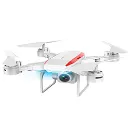
- 360° 3D flipping for front,back,left and right direction
- Long lasting battery and flying time up to 20 minutes
"Amazon, Amazon Prime, the Amazon logo and Amazon Prime logo are trademarks of Amazon.com, Inc. or its affiliates". AS AN AMAZON ASSOCIATE, WE EARN AFFILIATE COMMISSIONS FROM QUALIFYING PURCHASES.
Quick Summary
🏆 Best Overall: DJI - DJI FlyCam Captures Complex Cinema... | ⭐ Runner Up: Skydio - A Drone With All New Features F... | 💰 Also Great: DJI Spark - Get Exclusive intuitive Quic...
Things to Know While Selecting a Drone: Drone Buying Guide
Do you need to inspect a potentially dangerous mine shaft? Or take an aerial view of the ground? Spray your field with pesticides? A one-stop solution is to have Drones with you. Drones or Unmanned Aerial Vehicles (UAV) are vehicles where the pilot doesn't physically have to be in the craft. They can be manually driven using a remote control, or autopilot.
Commercial drones have a wide range of uses and may come with cameras allowing them to take birds-eye view images. There are many types of drones, some of which are mentioned below.
Types of Drones
Drones have taken the world by storm with a wide range of benefits. Specialized drones have been designed to perform particular tasks and differ from each other. Let's have a look!
Agricultural Drones:
Drones that are used to enhance the farm process are called agricultural drones. They can be used to increase yield, boost efficiency, or just for monitoring by spraying pesticides, quite common in recent times.
Furthermore, they can be used to monitor the crops from an aerial viewpoint to check for infestations, and sensors attached to the drone scans temperature, humidity, etc.
Advantages of Agricultural Drones
- Agricultural drones get the same amount of work done in half the time and increase productivity.
- Drones that come with sprinklers can travel longer distances, decreasing the need for a workforce.
- Drones can be used to monitor crop health with the help of color-coded image technology.
- They have spatial memory, creating a store for maps. This reduces the effort to manage drones every day, as they can follow the routes themselves.
- Drones that come with detectors or height sensors help in increasing the "spraying efficiency", by adjusting themselves over the crop.
Military Drones:
Initially, drones were used as a defense mechanism. They were used by the military mainly for reconnaissance and more recently also as an unmanned attack vehicle. Military drones are mostly manually handled using a remote control. They are also mounted with cameras and other sensors for visual aid. The drones could get to remote locations to scout out enemies. Adding up, opting for drones has drastically dropped the loss of human life.
Advantages of Military Drones
- It decreases the loss of human lives. The military uses these drones for reconnaissance, so they can check for enemies before sending in troops to certain areas.
- It can identify the location of the enemy for a more surgical approach to combat.
- They are used to carry and dispatch weaponry for a less life-costing war. If the drones are shot down, no lives will be lost.
- They help in carrying packages to inaccessible areas for troops. Drones can very quickly reach remote locations to deliver medical supplies, food or even ammunition.
- They are cost-effective, easier to maintain and use than previously used airplanes. They also do not need a pilot to man them, but someone to control their position remotely.
- They take less time to deploy than planes. Thus, saving a lot of time.
Delivery Drones
UAVs used in the transportation of packages are called delivery drones. They may be used to deliver medical parcels to inhospitable locations, food to millennials or packages without manual labour. Medical emergencies happen all the time, and in times of need, roadways can be congested. Here, empty airways are a more efficient mode of transport. Drones take airways to reach the patient in need.
Advantages Of Delivery Drones
- Decreased human labor since drones can automatically find its way to the destination of the package by using GPS.
- Faster than conventional methods, drones can reach destinations quickly. Due to traffic and intricate roadways, ground vehicles would take a long time to reach their destination. Instead, drones can cut a straight path to and from the destination through the air.
- Drones take the airway instead of the road network, which is already congested. Delivery cars would just increase traffic.
- Reaches areas that would be otherwise unreachable without using air travel.
Search And Rescue Drones
Drones are valuable assets when it comes to emergency services. Natural disasters can render some locations unreachable. People in disaster-stricken areas require the most assistance. Cameras can be attached to them to identify humans in distress. Accordingly, rescue operators can communicate with the victims and contact them. Food and water supplies can also be sent to these victims. Drones are a much better option rather than putting the time and effort into using heavy machinery into digging and hoping you find someone. Instead, send a small, manually controlled drone into the distressed locations to identify the victim.
Advantages of Search And Rescue Drones
- Locations become inaccessible due to damaged roadways, broken bridges and even landslides. UAVs will not be disrupted by these, making the search and rescue operation very efficient.
- Since drones are unmanned vehicles, the rescuers don't need to be put in harm's way trying to save those that are affected.
- Smaller drones can quickly navigate through the rubble to locate buried people saving the effort of using heavy machinery to search through the debris.
Inspection Drones
Mines and quarries can be pretty hazardous. They can cave in, have toxic fumes and cause suffocation. Drones carrying specific sensors can be used in these cases to find the safe parts of the mine to send in miners. Also, large companies have massive warehouses containing millions of different parts. Manual inspection of these parts can be quite tedious. In this case, dji spark drones for recording videos can be used.
Advantages Of Inspection Drones
- These drones can reach small places where humans cannot reach.
- They can be used in areas filled with hazardous gases, pipelines, drains underground areas.
- They are quick to reach the target spots and reduce response time.
Terrain Mapping Drones
Geographic terrain mapping is essential. Drones carry distance sensors and fly over the region to be mapped. With the data collected, a detailed map of the terrain can be created. Understanding the ground can help us figure out what kind of settlement is best for that location. Terrain mapping also gives us an insight into what lies beneath.
Advantages of Terrain Mapping Drones
- Drones can reduce the total cost to survey a field
- It takes much lesser time for a drone to survey or map an area than doing it manually.
- Drones also promote the safety of employees and surveyors by using in adverse situations, without putting the employees' lives in danger.
- Terrain Mapping drones can provide numerous kinds of data at one time. Now, you no longer need multiple devices to do the job.
- The other most advantageous aspect is they can easily travel to inaccessible areas.
Construction Drones
During the construction of a building, the layout of the land and the dimensions of the building are needed. These can be designed with the use of UAVs. The drone can have sensors to measure the height, length and width of the lot accurately. These measurements can be used to design the blueprint of the building.
Advantages Of Construction Drones
- They can bring down the total time of surveying the construction site, taking high-resolution photos and videos.
- They eliminate any risk of life as they can be operated remotely. Unstable structures or accident-prone situations can now be avoided simply by the use of drones which provide real-time data to the managers.
- Drones can provide a 3D mapping of the construction site, doing the job of designing even easier and less time-consuming.
- The work that required multiple hands can now be done single-handedly.
- Drones also reduce the cost of surveying and data collection. The same task can be done numerous times with no extra charge.
Fire Fighting Drones
Aircraft have often been used to help in fire fighting. Helicopters carry tanks or large buckets of water and drop them atop the engulfed region. Some are even mounted with foam cannons. Water bombers are gargantuan planes that carry gallons of water to be expelled. Drones are currently being used in place of these aircraft, making it much safer to put out fires.
Advantages Of Fire Fighting Drones
- They can reach risky and inaccessible areas, saving many lives.
- Firefighting drones come with infrared capability, which allows them to see through smoke.
- With real-time video of the location, firefighters can assess the location and plan their entry accordingly.
- Firefighting drones also come with heat sensors, giving more accurate data of the situation.
- These drones are also used to deliver supplies.
Recreational Drones:
Drones are no longer restricted only for government use but are commercially available to the public as well. These drones are used for entertainment. They can be used to take photos from a bird's eye view; they can come attached with light-emitting diodes and be used for lighting shows and can even be used for sporting events like drone racing with GPS.
Advantages Of Recreational Drones
- They are smaller in size, have limited capabilities, and can be easily maintained. Thus, their cost is much lower than other heavily-loaded drones.
- They can provide high-resolution images and videos and be used to make movies or capture breathtaking scenes.
- They do not come packed with features so that they can be modified according to the user's needs.
- They are made of light material, portable, easy to use, and need no training to fly them.
Features
Drones all share some common features. They are:
Cost Of Drones
Drones vary in price on the basis of uses, size, and features. The cheapest drones are used solely for recreational purposes. They come with merely a remote control and the vehicle.
Any drones with additional aspects will naturally be more expensive. For example, drones with cameras can leave quite a large dent in your pocket, while pesticide spraying drones are costly. Other factors like battery time, flight height, and remote control range can also have an impact on the price. Look for the features you require while purchasing the drone you want.
Warranty And Lifespan
Drones need to face hostile environments, make inaccessible locations reachable and sometimes be able to carry heavy cargo. They need to be fairly robust vehicles. They are made up of a collection of different parts, each coming with its own warranty. The frame generally comes with no warranty, while the functioning parts come with 6 - 12 months.
How can you improve the lifespan of your drone? Here are some of the preventive measures to consider:
Tips And Precautions While Using Drones
Here are a few things to know before you buy your first drone. These tips will make you a safe flyer.
Drones


